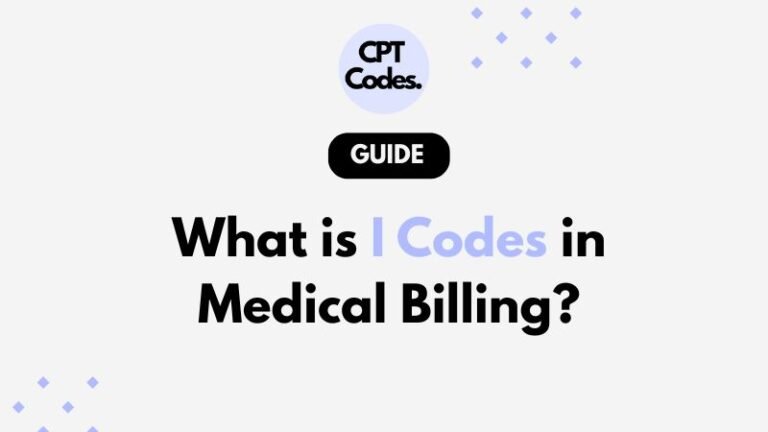Medical billing is filled with abbreviations, alphanumeric codes, and specific terminology that help healthcare providers get reimbursed correctly. One such term you might come across is “I Codes.” But what exactly are I Codes in medical billing, and why are they important? Let’s break it down.
Understanding Medical Billing Codes
In medical billing, every service, diagnosis, and procedure performed by a healthcare provider is represented by a code. These codes standardize communication between providers, insurance companies, and government payers like Medicare and Medicaid.
The most common coding systems include:
- ICD (International Classification of Diseases): Used for diagnoses.
- CPT (Current Procedural Terminology): Used for procedures and services.
- HCPCS (Healthcare Common Procedure Coding System): Used for supplies, equipment, and non-physician services.
- What Are “I Codes”?
“I Codes” typically refer to a subset of HCPCS Level II codes that begin with the letter I.
These codes are used primarily for drugs, biologicals, and certain medical supplies that don’t fall under standard CPT codes.
For example, HCPCS codes are alphanumeric — the first character is a letter (A–Z), followed by four digits.
Each letter represents a category of items or services. In this case:
- I Codes cover radiopharmaceuticals and diagnostic imaging agents, as defined by the Centers for Medicare & Medicaid Services (CMS).
Examples of I Codes
Here are some examples of how I Codes are used in real-world billing:
- I1234: Diagnostic radiopharmaceutical agent for imaging.
- I1311: Sodium iodide I-131, therapeutic use.
- I1522: Injection of specific imaging tracer.
(Note: These examples are illustrative. Actual I Codes may vary depending on CMS updates.)
These codes help ensure that specialized drugs and imaging materials used during diagnostic procedures are billed correctly and reimbursed accurately.
Why I Codes Matter in Medical Billing
-
Accurate Reimbursement:
Each I Code ensures that healthcare facilities and providers receive payment for costly imaging agents and radiopharmaceuticals. -
Compliance:
Using the correct code prevents claim denials and ensures compliance with CMS and payer rules. -
Transparency:
I Codes help insurance companies understand the exact materials used in a diagnostic or therapeutic process.
How to Stay Updated on I Codes
HCPCS codes, including I Codes, are updated annually by CMS. To avoid billing errors or compliance issues:
- Check the CMS HCPCS Level II Code Book each year.
- Use medical billing software that auto-updates code sets.
- Follow updates from the American Medical Association (AMA) and Medicare Learning Network (MLN).
Final Thoughts
Understanding I Codes in medical billing is essential for anyone working with radiology, nuclear medicine, or diagnostic imaging claims. These codes help providers accurately bill for specialized agents, maintain compliance, and ensure smooth reimbursement processes.
If you’re a medical biller or coder, staying up to date with HCPCS updates and payer guidelines will help you minimize denials and maximize revenue integrity.

